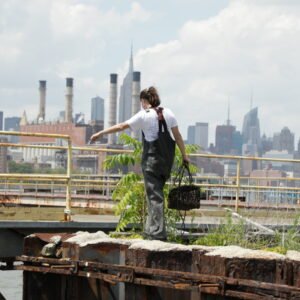
Before Europeans even reached the shores surrounding the area that would become New York City, Native Americans (the Lenapes) made oysters an essential part of their diet. And until the 1920s, the city would provide much of America with their oysters, developing a complex infrastructure to deliver them via ships, trains, and ultimately trucks.
In 2014, teachers from one of the city’s most innovative educational programs, the New York Harbor School, created The Billion Oyster Project. Its goal is to rejuvinate the city’s oyster beds. It’s part of a larger vision of making NYC’s 520 miles of waterfront a greater resource for all who live here and visit.
Charlotte Boesch is part of that program. Passionate about food, kids, and the ocean, after studying anthropology in college, she later helped teach a program in regenerative agriculture, and then attained a master’s degree in the Food Studies Program at New York University. Today, Charlotte oversees another type of regenerative agriculture; heading collaboration between this organization and the city’s rich reservoir of great restaurants that serve oysters.
Concretely, Boesch ensures that once those restaurants serve their oysters, the shells are reintroduced back into local waters. It’s a fascinating vision, project, and job. Early in October she gave us some time to share her experience in that program. Stir the Pots hopes to do future stories on the New York Harbor School, as well as coverage of both commercial and non-profit organizations dedicated to food sources that surround urban harbors. For now, we are pleased to offer this interview.
Charlotte, paint a picture for us of The Billion Oyster Project.
We’re a non-profit located on Governor’s Island in New York City. Our mission is to restore a billion live oysters to New York Harbor by 2030 and engage one million New York City students in the process of that work. We believe that oyster restoration is so important and vital to New York City.
It’s about getting young people involved in the process and having young New Yorkers know what’s happening at their waterfront and at their water’s edge. That will create the most long, longest lasting impact for, for New York City and, and to solve the problem, which is our degraded New York Harbor.
We have this dual mission to do large scale oyster restoration, and to be the most successful at it, we have to have young people involved in the process of doing it. This goes back to our core and where we were founded. Which was at the New York City Harbor School, a public city high school. We have had students and education at the forefront of all the work that we do since the beginnings of Billion Oyster Project.

Why oysters?
There are three primary reasons. Oysters are incredible filter feeders. An adult oyster can filter up to 50 gallons of water a day. Oysters filter excess nitrogen and phosphorus from the water. Our name came from the fact that if we had a billion live adult oysters in New York Harbor, we could filter the standing volume of New York Harbor every three days. That’s one of three reasons we focus on oysters.
The other two reasons have to do with the way oysters actually grow in the wild. Oysters in the wild grow in these 3D reef structures attached to one another. They’re creating these oyster reefs as they’re living. And those oyster reefs have a lot of the same benefits as other reef systems like coral reefs or even a marsh. These 3D reef structures are creating habitat and biodiversity. These oyster reefs are adding biodiversity wherever they’re living and especially where they’re thriving. If you remember high school science, oysters are a keystone species, which means they’re an indicator species. When an oyster is thriving in a marine environment, it indicates that a lot of other marine life is also thriving.
And then oysters are also incredible at attenuating wave energy so they can protect shoreline. Pre-colonization New York City was surrounded by 200,000 acres of oyster reef. To help you conceptualize that figure, consider that all five boroughs add up to roughly about 200,000 acres. So imagine all the landmass of all five boroughs as oyster reefs protecting our shorelines. Now just imagine having that extensive habitat… think of how it creates a marshy ecosystem and can really help against shoreline erosion from storms and storm surges. And that’s why we’re trying to restore oysters.
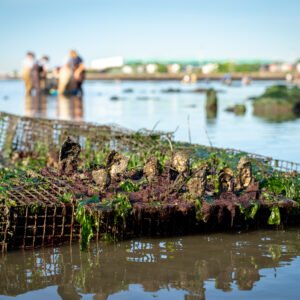
I like to kind of talk about a fourth reason, which is the history and culture. There’s a depth of cultural significance with oysters in New York City. First, the indigenous groups who inhabited this area before the Europeans arrived, they were eating and harvesting oysters, well before the European colonists. After the colonists came, they also really enjoyed oysters. In the 1800s, we were shipping oyster New York City oysters across the country on refrigerated rail railway cars.
Ultimately, we over-harvested all the oysters. The population started to boom. And there was a lot more overall oyster consumption. And we weren’t replenishing the stock. Also, we began dredging our shipping channels to create access for large ships to come into New York City harbor. Just that act of dredging killed a lot of the existing oyster habitat as well as other marine habitats. And then there was pollution. Industry started popping up across all New York City’s shorelines. Then people started getting sick from eating local oysters due to the pollution and raw sewage that was being dumped into New York Harbor. All those things really impacted the existing oyster population in New York City.
When were oysters last harvested commercially in New York City?
The last oyster bed closed for harvesting in the 1920s. Oysters were virtually an extinct species in New York City up until the 1970s when the country passed the Clean Water Act. Which provide more regulations about what we can and cannot put into the harbor. So oysters are again becoming viable in New York City. But we’re still, of course nowhere at the population of, of what we once were. And we probably can’t recreate New York City as a marshy marine ecosystem as it was before the 1600s. But we can create pockets of New York City that can mimic kind of that old habitat that we used to have.
Paint a picture of the operation. What are the different parts?
We have a restoration team tasked with doing large scale oyster restoration. A lot of that has to do with permitting and regulatory bodies, talking to the state and the city for permissions to do the work that we want. Then there’s the project management side and the implementation of getting oysters into the water. That’s a team that really handles a lot of the logistics and science behind oyster restoration. And then we have an education team.
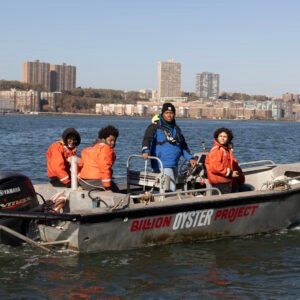
Our executive director, Pete, was once the Harbor School’s aquaculture teacher. The head of our education team, today, she was one of the founders of the New York Harbor School. That education team is tasked with developing an oyster curriculum for other teachers. They train teachers on how to implement that curriculum. They train teachers on how to take students out to the waterfront. Because one of our big initiatives is trying to get more students out of the classroom and doing this hands-on restoration work. Measuring oysters, monitoring oyster growth, seeing wild oysters at the shoreline. We work to get students out to the waterfront’s edge. And then there’s work that I do. With our New York City restaurants. Where we run a recycling program.
And what does that consist of?
We’re literally collecting oyster shells from our restaurant partners, and these eventually make their way to Governor’s Island. It’s sort of a circular program.
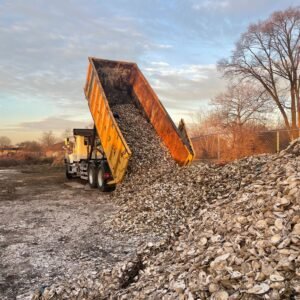
We take oyster shells that originally came from an oyster farm and then are distributed to New York City restaurants and then we collect the shells from eaten oysters and place those shells into our tanks. And we then are setting the baby oysters onto those shells and using those shells to recreate oyster habitat. We call it spat-on-shell. Spats are baby oysters. So we’ll create spat-on-shell oysters and dump them into different pockets of the harbor. But it’s not just willy-nilly dumping or throwing them in the harbor. There’s a lot that goes into picking our sites and what type of restoration practice we’re going to use at each site.
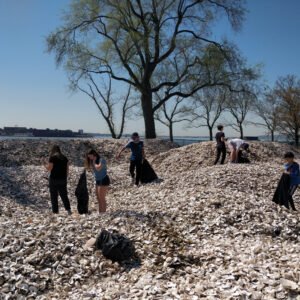
Sometimes we will also just deploy blank shells, which means that there’s no spat on them. No baby oysters. Just to back up a bit, oysters are like other aquatic species where they release egg and sperm into the water. That creates oyster larvae. A free swimming floating larvae that is free swimming for the first few weeks of life. It then grows a foot, and that foot is trying to find a hard substrate to attach onto, and it’s chemically inclined to want to attach a calcium carbonate rich substrate. The calcium carbonate is the oyster shell. So in the wild, these oyster larvae are attaching to older oyster reef. They’ll attach onto older oyster shells, and then they start to sequester carbon and calcium from the water column, and they start to grow their own shell.
Oysters grow their own shell. Once they attach to the older shell, they’re, growing their own shell and they’re also stuck onto the preexisting shell. That’s how the reefs get build. And that’s how oysters continue to thrive. First you have older oysters and then you grow newer oysters on top.
Does today’s New York harbor get those larvae?
There are oyster larvae that flush into the harbor from Long Island where there are existing populations of oysters. There is one existing oyster population up near the Tappan Zee Bridge. But the bottom of the New York City harbor is composed of what we call in the oyster industry, “black mayo.” There are a few species that can survive in it. It’s sludge. Most of the oyster larvae in the water will just like fall into the black mayo and suffocate and die. So by us putting in more of that substrate into New York Harbor we’re providing a chance for existing oyster larvae, a place to what we call set. The oysters set onto the other shells, older shells.
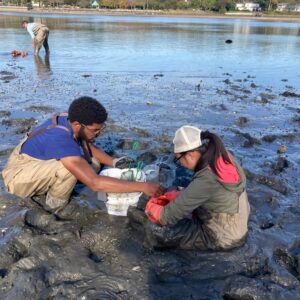
But oysters also can set onto non-calcium carbonate structures like concrete. So one of the other restoration tactics that we implement are called reef balls, which are concrete. And there are these, like large concrete reef falls is like, there’s hollow circles with holes in them. They’re kind of artificial reefs. We usually do some type of combination of both of those things. Set the reef balls with the oyster spat as well as the shell. So we’re not just hoping that oyster larvae are going to set onto these reefs. The number of oyster larvae is not high enough to really create like a huge amount of reef on its own.
That’s why we also do this spat-on-shell restoration. In other areas of the country, like Chesapeake Bay or Louisiana, they do a lot of oyster restoration where they don’t need to seed the spats. They have more robust populations of oysters. We’re kind of unique in besides just putting in the substrate (the shells), we also need to put in the live oysters too.
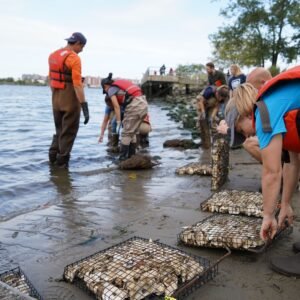
Do you farm those baby oysters?
We used to try to breed our own oyster larvae. Actually we still do. But the hatchery is small. Oysters are finicky. They’re live animals. Hatching oysters, it’s not for the faint of heart. And doing it with high school students, well, we do have a hatchery, but we use it more as a teaching tool. We purchase the larvae from a few, few different areas. Maine and Virginia. That’s one of the many barriers we face. Because larvae are an incredibly expensive item.
How does your organization measure success?
We have two key metrics. Live oysters that we’ve restored to New York Harbor. And then the number of students that we’ve engaged. The education team, their goal is really to get a million students engaged in this work. And they do that primarily by getting teachers to teach our curriculum in their classrooms.

But there are also supporting metrics. Like are we collecting enough oyster shells to support our restoration work? I’m always looking at how are restaurants engaged in the work we do? Are the diners learning about the work we do? Are the chefs engaged? Is the staff engaged? Are they able to tell diners about the work the restaurant is doing to support us.
How did you personally come to start working with Billion Oyster Project?
I started working with the Project in 2017. My background is in food waste and food systems. I was getting my master’s in food studies from NYU and a fellow student was already working at the Oyster Project. Her name was Maddie. She was helping the Billion Oyster Project grow our restaurant portfolio. And I came on to help produce our annual fundraiser called the Billion Oyster Party.
It’s a huge event every year. We held our latest last week. We had 1500 people in Red Hook for the event. We have held it at the Brooklyn Navy Yard before. We have anywhere from 40 to 50 oyster farmers who come and shuck and serve their own oysters. We have about 20 of our restaurant partners who serve food. It’s always a great night. Anyway, I used to work for a wholesale tea company selling tea to some of the higher end restaurant chains. Maddie looked at me for my account management skills. She thought it would translate well to managing all the vendors coming to the Billion Oyster party. Beyond that, I have always been really interested in food systems and have worked on some sustainable farms in the past. And I just also love the ocean. So it really was kind of a mesh of all these things. For two years I helped produce the Billion Oyster party. Then I came on full-time to manage our restaurant portfolio with the program to collect shells.
Those restaurants sound very important to the larger project.
They are. Without the restaurants, we can’t get the oyster shells back into the harbor. I mean, there are other methods to getting large scale supply of oyster shells, but it demands trucking them in from large shucking houses in the south for tons of money. Our entire shell recycling program started when the founder of Billion Oyster Project, who is our executive director, Pete, started collecting the shells.
Back then Pete was the aquaculture teacher at the Harbor School. And he needed that substrate –the oyster shells – because he wanted to teach his students about growing oysters. Pete grew up working on Fisher’s Island Oyster Farm, which is an oyster farm off the coast of Connecticut. The farm had a relationship with this New York City restaurant called Oceania in Midtown. When Pete became a teacher and was educating kids about oysters, he started looking for shells. So he went to Oceania and the chef offered to contribute shells to him. So Pete would ride his bike to Oceania, pick up the shells and use them in his classroom. That was really the start of our shell recycling program.
How many restaurants are you working with?
Right now we’re working with around 75 restaurants. It fluctuates. Some restaurants shut down. And then others only serve oysters in the summer – even though you should eat oysters in the winter. But they sell better in the summer. So restaurants will take them off their menus. So that impacts our shell collection.
We’ve been collecting around about 300,000 pounds of oyster shells a year. Those 300,000 pounds end up back in the waters off Governor’s Island. So the collection of shells is obviously impacted by restaurant oyster sales. If oysters don’t sell… that’s fewer shells… And since COVID oysters have been more expensive. Oysters are selling for like $5 a piece now. Labor prices have gone up. Shucking oysters takes time. So it’s not a lucrative business model to have a robust oyster menu.
Tell us about COVID’s ripple effects. How have they played out in the restaurants?
We have seen a shift in diner behavior, and in the sales of oysters, in the last five years. Pre-COVID, in 2019, we collected almost 450,000 pounds of shells. And then 2020 happened and the industry… well I don’t think it’s recovered. We are trying to figure out how to mitigate against it. But every year it seems like it’s slowly crawling back.
How do you collect all the shells. Do you have your own trucks?
No. We had a few iterations of our Shell Recycling program; the first one being Pete on his bicycle. We figured out early that as a nonprofit, it wasn’t efficient to become waste haulers. To figure out all those logistics; trucking, parking, everything else. And we’re based on Government’s Island. Which you can only access via ferry. So we hired out the physical collection piece to an operator.
Our current operator is part of a wholesale seafood company located in Hunts Point that also owns a retail space in Chelsea Market called Lobster Place. Our delivery person is an employee of Lobster Place. He drives a truck that is co-branded with Lobster Place and The Billion Oyster Project.
And accessing restaurants in New York City is a crazy logistical nightmare. Boris, the main driver, he knows how to get things done. How to access restaurants at 5:00 am. How to get into loading docks. How to double park and where to double park to not get parking tickets. He speaks Spanish so he also can speak to most of restaurant staff who work that early in the morning. He really knows the ins and outs of getting the shells. And if Boris is sick, Lobster Place has a roster of drivers that they can fill in.
It really helps create efficiency. Compared to depending on a staff member. Or one truck. And there are so many logistical things that go into the collection piece that it makes more sense to pay Lobster Place to do it.
Talk more about logistics. Describe what you mean.
Logistics are our biggest challenge with the shell program. Each restaurant is so unique. Each restaurant is its own project. Each restaurant has different walk-in space, different loading docks, different storage areas, or non-existent storage areas. Since COVID, some restaurants cut their lunch shift, so no staff is at the restaurant until maybe 11:00 AM. We need to deal with staff turnover at restaurants. We’ll have a great contact at the restaurant who’s really interested in the work we’re doing but then they leave. With that person gone, nobody is going to take over the program and we have to basically rebuild that entire partnership. So it’s constant staff reengagement. A big part of the program that I run is staff education. But we also have some awesome relationships, champions at these restaurants who love the work we’re doing.
It sounds like the chefs are critical to those relationships.
Chefs rule the kitchen, so we always want to make sure the chef is on board with our program. But it’s also important to get the staff who’s doing that actual work, the bussers and the dish staff, the folks who are really sorting through the back of house stuff, they’re so important.
And then a lot of people move around between restaurants. And that has helped us grow by organic word of mouth. So we have a ton of incoming restaurant interest, which is great for us. It’s like almost too much interest. Because we can’t take on every restaurant that we want to. There’s just been this organic word of mouth from this incredible group of workers in New York City that have created a thriving and brilliant restaurant scene. that we have.
A lot of what has helped me is knowing the right person to talk with. Knowing who is going to listen. If the chef isn’t on board, whoever is in charge of the kitchen, if they’re not on board… restaurants are so hierarchical. If that person in charge is not on board with what you’re doing, don’t bother.
That personal interest really matters.
Yes. If we have interest coming to us from a restaurant marketing team… or a PR company who works with a hospitality group… and they want to talk more about how they can be more sustainable, that is not going to be the strongest shell recycler restaurant for us. Because they’re doing it for the wrong reasons. They’re doing it for the marketing ploy. That’s not a bad thing. But it’s more important that the chef, or whoever oversees that kitchen, they need to want to work with us. So while I love the marketing piece, how we’re going to reach the diners at the restaurant and create more buzz about the Billion Oyster Project in the restaurant industry, ultimately for us it’s knowing the kitchen hierarchy and who to speak to and who can be the one to work with on building logistics to collect the shells.
Is there a type of chef who seems most enthusiastic about your program?
I’ve never actually really thought about it, but anecdotally, our stronger chef partners, they’ve typically been people who have relationships with the waterfront, who grew up by the water, who love the ocean, who have some type of background with fishing. Or seafood was just a big piece of their upbringing. I guess another piece of it is the cost savings. If we collect their shells, they have less trash.
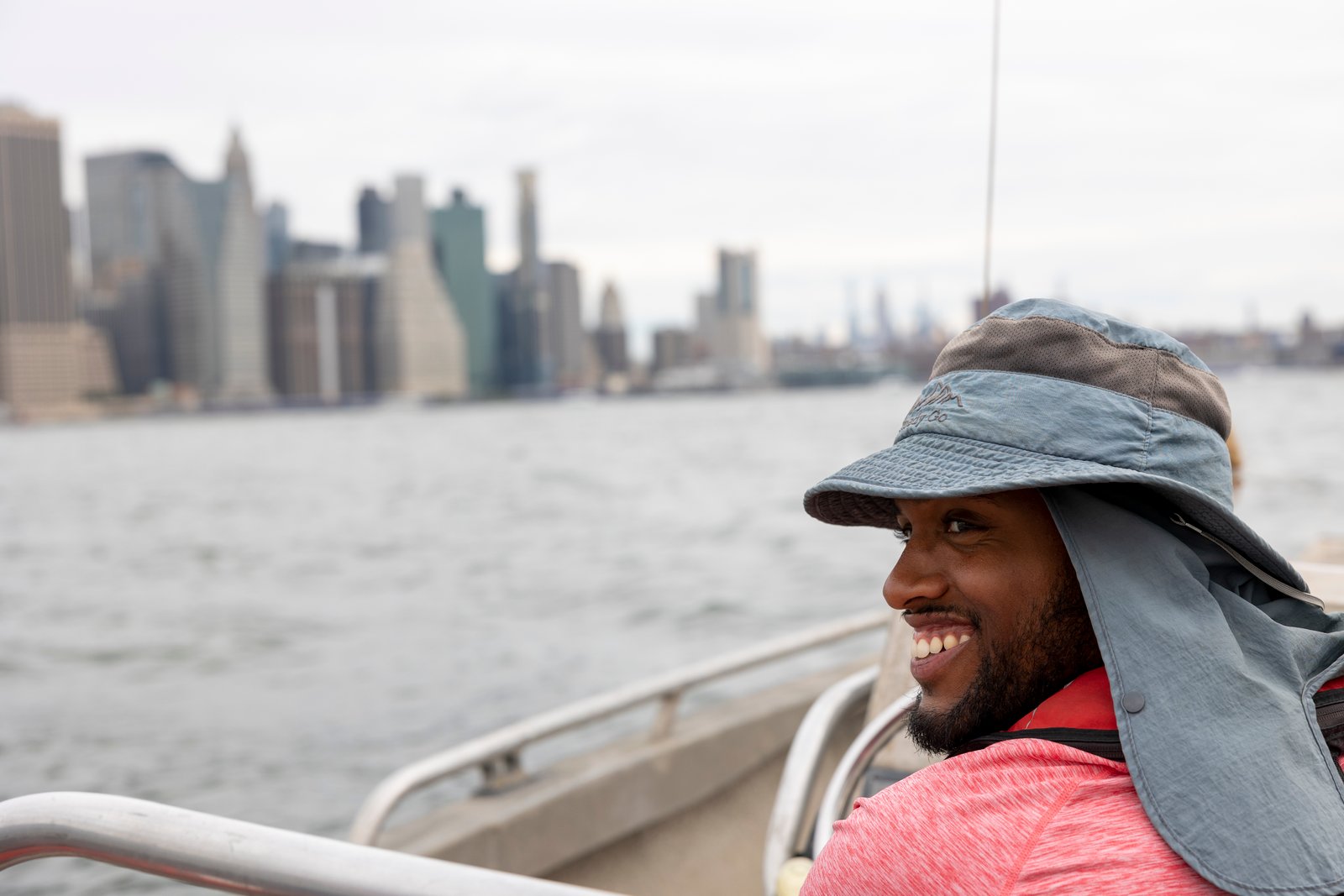
But to be honest, the biggest thing is getting them excited about the waterfront, the potential of what New York City could be with a more thriving, robust waterfront where more people have more access to the water. And that’s the ultimate goal of The Billion Oyster Projects. To get more people to understand and love and appreciate New York City as a waterfront city, as a coastal city.
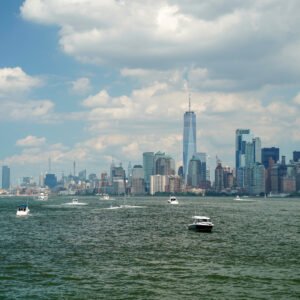
Basically most New Yorkers live like less than a mile from the ocean, and they think it’s teeming with pollution, and sometimes it is. But it also has a potential to be one of the greatest leisure activities. And one of the greatest economic opportunities is our waterfront. Like we have Central Park, and we have Prospect Park and these great green parks. But the water could also be a wonderful way for people to enjoy their marine environment just like their natural green environment. It’s really about trying to inspire more people to care about the ocean that they live likely less than a mile from. And see the potential of what it could be. And we really want it to be for everyone. Not just for people who can afford to get on a boat. But for all New Yorkers.
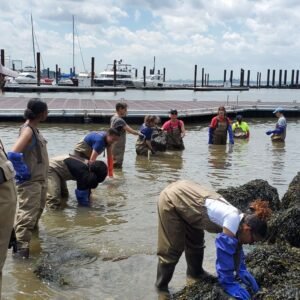

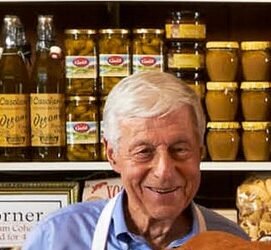


0 Comments